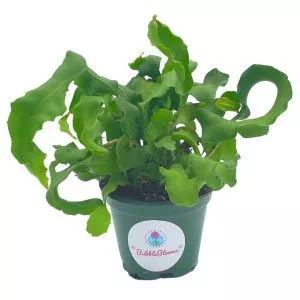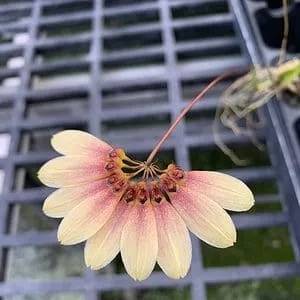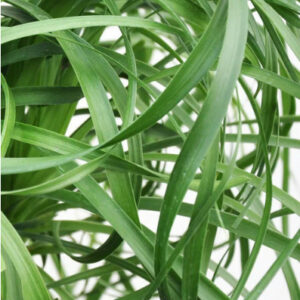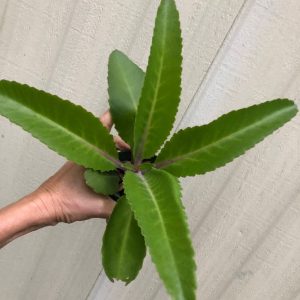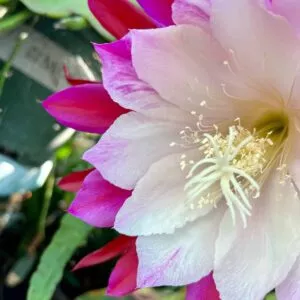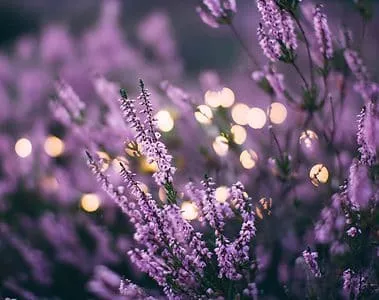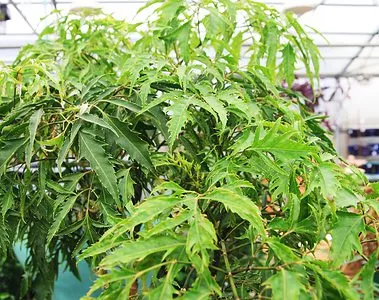No products in the cart.
Shade flowers thrive in partial shade in the garden with minimal care. So, if you have garden beds receiving little or no sun, the shade flowers on the list will work well in your shade gardens.
We have compiled a list of shade-loving cultivars for you. These plants thrive in full sun, full shade, and partial shade to brighten up any dull spot in the garden.
So you will not need to protect them from the harsh afternoon sun.
The Best Shade Flowers For Your Shade Garden
On the list, you can find shade perennials with beautiful leaf colors and exotic flowers; some even have cool names. Still, before you pick any of these shade-tolerant cultivars, we recommend checking the USDA Hardiness Zones for each species.
Or read the plant label to see if it can handle the conditions in the landscape. Another important note is that full shade means the area never receives full sun. While part shade implies, the site does not receive more than 3-4 hours of sun daily.
And if you wonder what shade plant means, it refers to its tolerance to thrive in low light levels. These outdoor plants thrive and flourish in the shade of trees and other plants. So, are you ready to grab your garden tools and get your garden beds ready?
Please choose any of these plants to add to your garden or grow them in containers.
Astilbe spp. Loves Partial Shade

When you look at cultivating the Astible, watering is the most important thing for this shade plant. The plant needs consistent watering and well-drained soil. To help retain moisture, you can add some mulch around them.
The Astible is a slow-growing plant with plum-like flowers that grow on stalks above the foliage in spring to early summer. These flowering plants do best in partial shade but can also tolerate full shade.
You can find several species with red, lavender, white, and pink flowers. The flowers grow best in the USDA Hardiness Zones 3-8.
Bleeding Heart a Shade Plant With Arching Stems

Lamprocapnos spectabilis, better known as the Bleeding Heart, blooms in late spring with heart-shaped flowers on arching stems. It is one of the best shade-loving flowers to tolerate the full sun in cooler climates.
Still, too much sun to heat can interfere with the blooms. So, plant them in shady spots protected from the wind as they have delicate flowers. Also, keep the soil moist but not waterlogged.
The Bleeding Heart is found with pink or white flowers and grows well in the hardiness zones 3-9 in part shade.
Coral Bells and Early Summer Flowering Plant

The Heuchera spp. start their blooms in spring to early summer. These full-shade plants have colorful purple, green, red, chartreuse, and coral flowers, with lime green leaves or variegated foliage.
In the growing season, the flower stalks have petite blooms, but the foliage usually is green. But you can find them with purple or gold leaves as well. This outdoor plant grows in full sun but prefers some afternoon shade.
Too much direct sunlight can burn the foliage, but ensure not overwatering them in the shade, leading to diseases. So, instead, you can grow them in the growing zones 4-9. They only grow up to 24 inches tall.
Dogtooth Violet With Lily Yellow Flowers
 Erythronium albidum @flickr
Erythronium albidum @flickr
Erythronium albidum, or the Trout Lily, has delicate flowers with bright green leaves. The flowers have curved petals during early spring and open with the morning sun to close in the evening.
The Dogtooth Violet has showy flowers that grow best in part shade as it thrives in woodland settings. However, the foliage needs protection from direct sunlight and heat. Keeping the soil moist helps add a layer of mulch around the plant and keeps the roots cool.
You can grow them in zones 3-8; different color varieties are available in white, yellow, and violet. Please provide them with well-drained soil.
Forget-Me-Not For The Garden and Containers

Myosotis sylvatica is another widespread plant grown primarily in a shade garden, window boxes, or containers. The Forget-Me-Knot displays small flowers with five petals in a bright blue hue with white-yellow centers.
The best part is that this beautiful flower grows in different conditions. If you live in a warmer climate, they do best in a dark corner away from the intense afternoon sun. In cooler climates, these shade plants can tolerate more sun.
Also, deadhead the spent blooms to help reduce self-seeding to control the spread. You can also grow them as a ground cover in the garden. These beautiful flowers grow best in zones 3-8 in rich, well-drained, moist soil.
Foxglove Blooms Clusters of Tubular Flowers

Digitalis purpurea or common foxglove is found blooming in early to mid-summer with clusters of flowers with a tubular shape. The climate you live in determines where you need to plant them. When living in environments with hot weather, please place them in shady areas.
For cooler climates, these plants can handle direct sunlight with afternoon shade. However, these plants are susceptible to rot and are best not to overwater. You find the Foxglove blooming pink, red, yellow, purple, and white flowers.
The best-growing zones where these plants are hardy in zones 4-8.
-
Free Shipping$20.99Sold By: Gar-Zen Botanical Design
In stock (can be backordered)
Snake Plant Dwarf Birds Nest Plants (2) Ship Free
Rated 4.86 out of 5 based on 49 customer ratings00Sold By: Gar-Zen Botanical Design -
$39.99Sold By: BubbleBlooms
In stock
Curly Sue big in 4 inch pot, Epiphyllium guatemalensis mostrouse, Curly locks orchid cactus, pink flower cactus, grows large
Only 96 available and it’s in 1 people’s basketRated 4.81 out of 5 based on 279 customer ratings00Sold By: BubbleBlooms -
Free Shipping$34.99Sold By: Aloha Hawaii Orchids
$39.99In stock
Bulb. Daisy Chain ( Makoyanum x Cumingii ) 2″
Rated 4.65 out of 5 based on 268 customer ratings00Sold By: Aloha Hawaii Orchids -
$44.99Sold By: Carlo's Plant Farm
In stock
Ponytail Palm – 4 inch pot | Carlo`s Plant Farm
Rated 5.00 out of 5 based on 22 customer ratings00Sold By: Carlo's Plant Farm
Fuchsia Has Bright Teardrop Blooms

The Fuschia is a trailing plant with teardrop blooms that look fabulous in hanging baskets and the garden. Still, these shade flowers need bright light but protection from the afternoon sun.
Hence, please provide them with well-drained soil in a spot with full morning sun and partial shade in the afternoon. Another important thing is to keep them protected from the wind. Also, feed your plants once a month with a fertilizer made for annual flowers.
The Fuchsia grows best in the hardiness zones 8-11, but it also depends on the cultivar you grow. These shade plants display white, red, purple, pink, and bi-color blooms.
Hellebore are Shade Perennials

The Helleborus genus has many species that are shade-loving plants. It is one of the easiest plants to care for and blooms in winter to early spring. These perennials have flowers that look like roses.
The plant can grow well in full to partial shade, but it can also tolerate more sun in spring while the weather is still cool. But if you live in hot climates, provide them with dry shade and well-draining soil.
The foliage is dark green, and the flower colors are yellow, red, white, purple, or pink. With striking foliage and an exotic-looking flower, these plants grow best in zones 5-8.
Hydrangea With Shade Loving Flowers
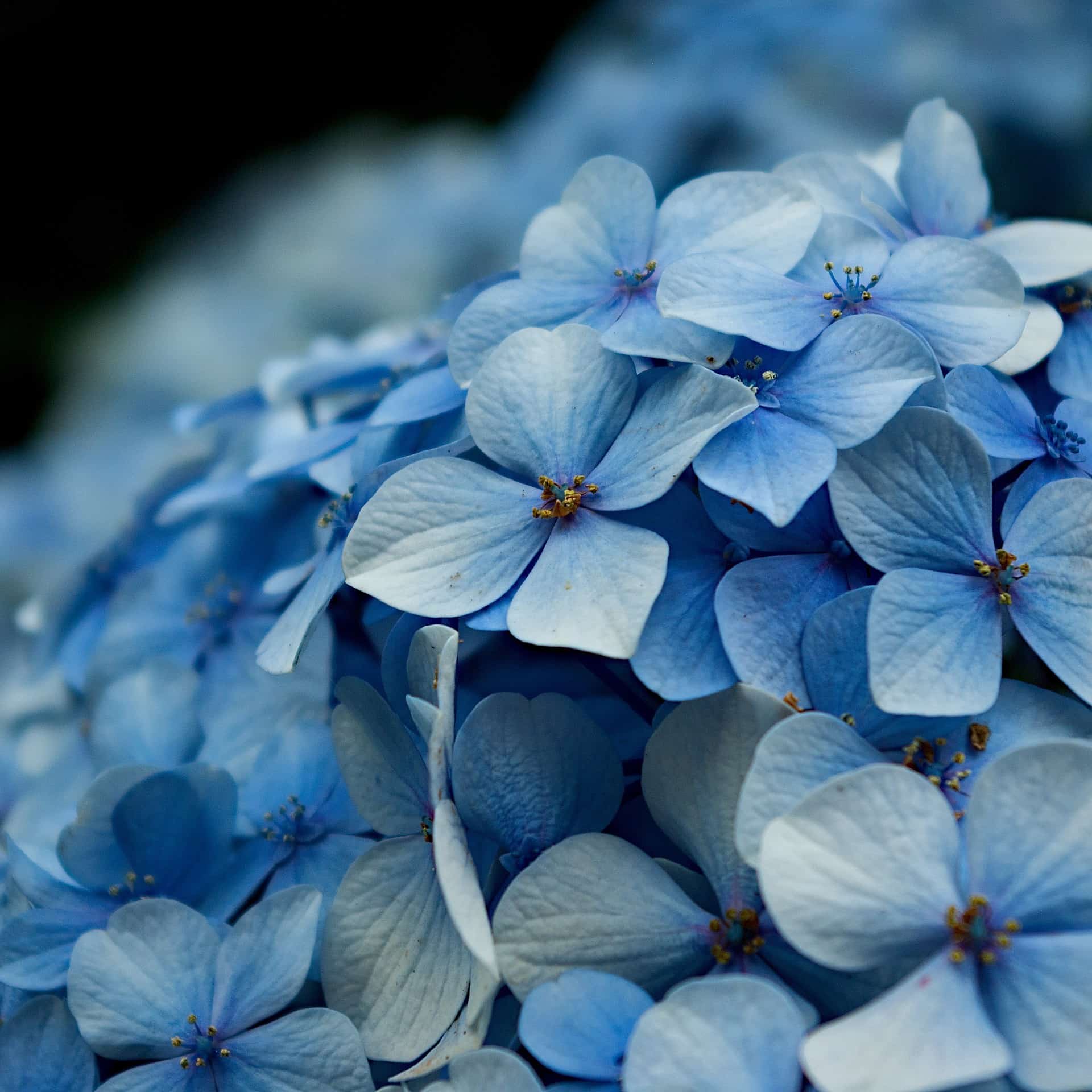
A favorite for a full-shade garden is the Hydrangea spp. You find this plant with tiny blue flowers and in other colors. Some bloom large clusters, while others have a flatter appearance. These plants do well under tall deciduous trees in part shade.
With too little sun, the flowering output reduces, but with too much sun to heat, it can wilt the plant. So please provide them with morning sun in late spring and shade in summer’s afternoon.
If you live in warmer climates, provide them with some additional watering. You can grow them in zones 5-9 in well-draining soil.
Impatiens With Brightly Colored Blooms

The brightly colored blooms in multiple colors stand out against the dark green leaves on the Impatiens. It is an annual flower that loves the shade. You find dozens of species available, but the common ones grow only a few feet tall.
It flourishes in dappled light and blooms in spring and summer. The best part is these plants will even bloom in full shade. So, if your plants are in a sunny spot, ensure to give them enough water.
They typically grow as annuals in zones 10-11. You find them with red, violet, coral, pink, yellow, and white blooms.
Lamb’s Ear an Interesting Ground Cover

Here we have shade perennials that can grow in poor soil and it has excellent drought tolerance. These shade plants have silvery green leaves that are thick and fuzzy. It makes for a fabulous display in the garden growing in part shade.
Still, a note of warning is not to overwater the Lamb’s Ear as it can quickly get root rot. In warm climates, it is grown primarily in part shade and in colder regions in full sun. Nonetheless, the attractive foliage easily scorches in the direct sun leaving it looking pale green.
You may think this is not a flowering plant, mostly grown for finely cut foliage. It blooms purple flowers. It grows best in hardiness zones 4-7 in well-drained soil.
Lily of the Valley With Small Flower Spikes

Convallaria majalis is another hardy ground cover with arching pale green leaves and fragrant petite white flowers. You see the blooms in early spring, and they spread fast. So, how much light does this plant need?
Well, it thrives in shady areas but is aggressive, and best to check in your area if you can grow them. The plant can tolerate morning sunlight but needs protection from direct sunlight in the afternoon.
An ideal spot is in a shaded area in a warm climate, and please keep the soil moist. These shade flowers grow well in zones 2-7 in well-drained soil.
Lungworts Spread Steadily

Pulmonaria spp or Lungworts spread steadily, and they are not invasive. You see the plant bloom in early spring when others wake up from late winter sleep. The flowers look like funnels or bells forming clusters.
The Lungworts are loving flowers that grow in direct light in cooler weather. Still, too much bright light burns the foliage, and too much shade minimizes the blooms. Another added interest is the leaves that have spots on them.
These perennials grow well in zones 4-9 in well-drained soil. The flower color varies from white and pink to deep red.
Primrose a Shade Gardens Dream Flower

Primrose belongs to the Primula genus, and different species are available—the foliage color ranges from dark green leaves to colorful flowers. The blooms are atop long stalks. It needs consistent watering but is not soggy.
This hardy perennial plant prefers a spot with the sun in the morning and dappled shade in the afternoon. While others can grow well in full shade. Depending on your variety, they can grow well in zones 3-9. You find them with white flowers and many other colors except green.
Rhododendron Loves a Shade Garden

Rhododendrons can grow in containers in a shade garden. Where most other plants die under tree covers as they need to fight for nutrients and water, this plant will survive. It is a flowering shrub that blooms in spring and early summer.
The Rhododendron roots do not enjoy heat exposure, and some shade will keep them protected. It also prefers rich, humusy, acidic soil that is moist. You find the color varieties in white, lavender, and pink.
Grow Rhododendrons in zones 4-8 in partial or full shade in well-drained soil.
Siberian Bugloss A Long-Lived Garden Plant
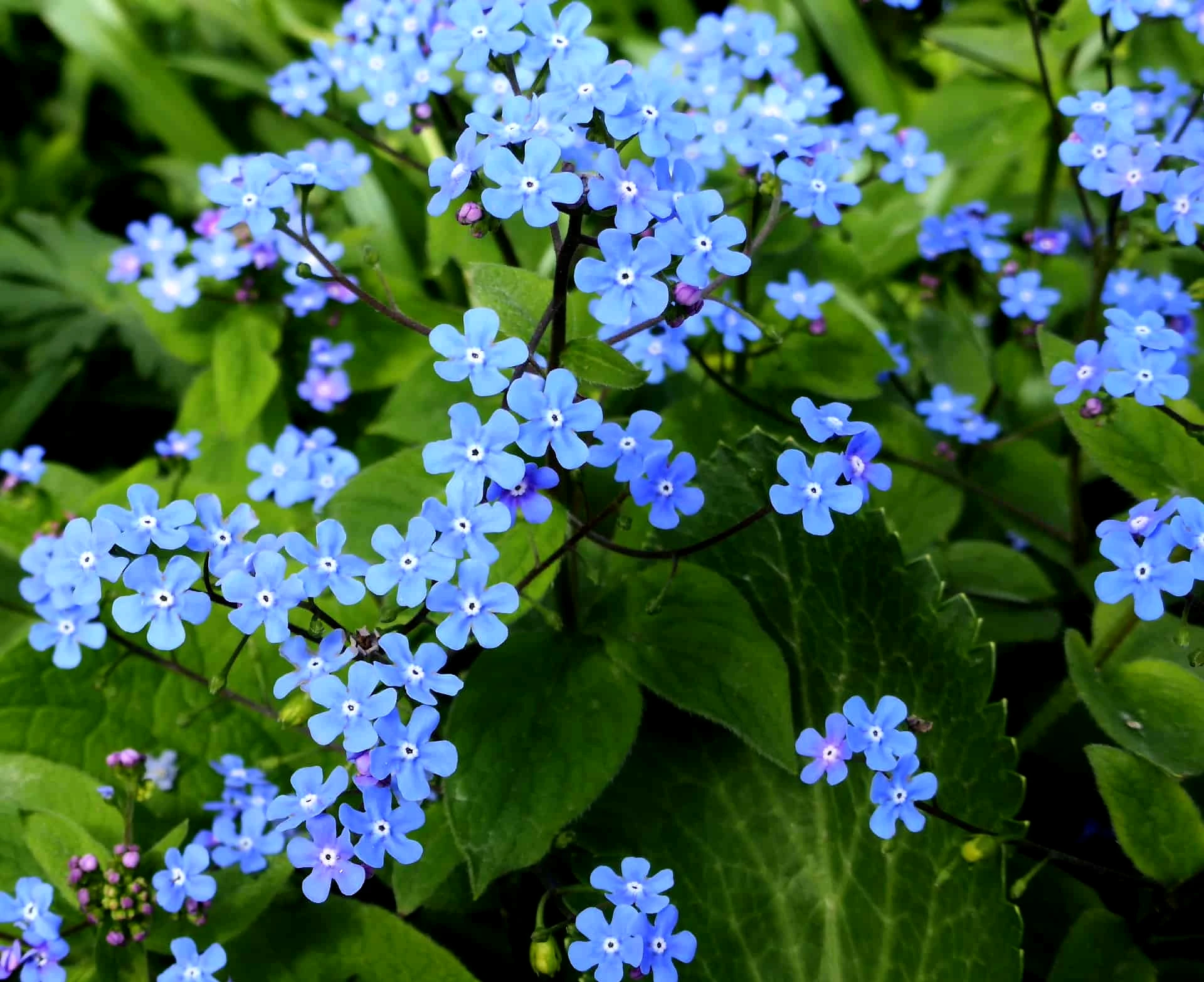
One of the best flowers for shade is the Siberian Bugloss. It blooms tiny blue flowers that grow with white centers. Mid-spring, you will see a colorful display similar to the Forget-Me-Knots.
Still, it is not the same plant as the foliage is a star in shady spots. Watering your Siberian Bugloss frequently when grown in a sunny spot would be best. Another concern is that the sun can burn the foliage, and the plant goes dormant.
Grow Siberian Bugloss in zones 3 to 7 for a beautiful flower display.
The Wishbone Flower With Trumpet Shaped Blooms

It would be best to plant these annual flowers in early spring after the last frost. You will see the flowers in early summer through to the fall.
It does not need much sun, but some morning light with shade in the afternoon helps. You can choose from different color varieties in lavender, white, pink, rose, to blue-purple. Provide the Wishbone with loamy, well-drained soil.
Frequently Asked Questions
There are different types of shade, including full shade (no direct light), partial shade (some natural light during the day), and dappled shade (intermittent sunlight filtered through leaves). Plants like hostas, ferns, and the leopard plant are well-suited for full shade, while astilbes and bleeding hearts can tolerate partial shade.
Shade-loving plants generally prefer well-draining, humus-rich soil. You can improve the ground by adding organic matter like compost or peat moss to increase moisture retention and nutrient levels.
Yes, many shade-loving plants produce beautiful flowers. Some examples include bleeding hearts, astilbes, and tiarellas, which offer a variety of flower colors and shapes.
The watering needs of shade-loving flowers vary, but generally, they prefer consistently moist soil. Water when the top inch of soil is dry, and adjust the frequency based on specific plant requirements and local climate
While no flower is entirely deer-proof, some shade-loving plants, such as ferns, heucheras, and pulmonarias, are less attractive to deer due to their texture or scent.
Combine plants with varying heights, foliage textures, and colors for an attractive garden. Mix low-growing ground covers with taller perennials and incorporate different leaf shapes and colors for visual interest.
Whether you want to buy, sell, or simply reach out to other plant enthusiasts, Plantly is the right place to be!
-
$15.99Sold By: BubbleBlooms
In stock
Philodendron Birkin, 4 inch, White Wave, Mermaid’s Tail
Only 93 available and it’s in 1 people’s basketRated 4.81 out of 5 based on 279 customer ratings01Sold By: BubbleBlooms -
$12.95Sold By: SunSoul Plants
In stock
LIVE kalanchoe suarezensis plant potted with soil in 3″ pot
Only 1 available and it’s in 1 people’s basketRated 4.87 out of 5 based on 98 customer ratings00Sold By: SunSoul Plants -
$9.99Sold By: Succulent Oasis
In stock
Small Cactus Plant Old Man of the Andes.
Only 7 available and it’s in 1 people’s basketRated 4.84 out of 5 based on 352 customer ratings00Sold By: Succulent Oasis -
$35.00Sold By: That Wild Yard
In stock
Clown Epiphyllum Plant, Orchid Cactus
Sold By: That Wild Yard

